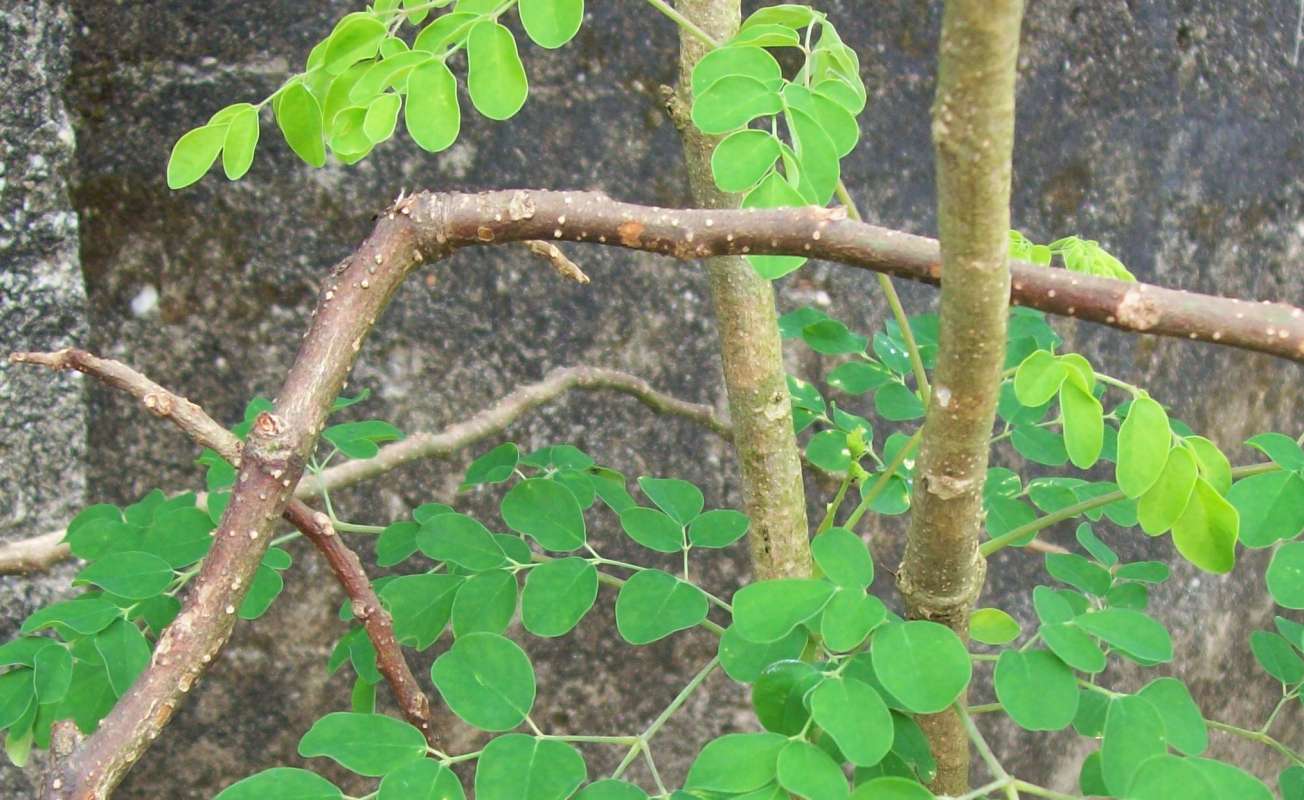SPECIES INFO
Moringa or horseradish tree (Moringa oleifera )is a widely grown spice. This appears to have originated in the foothills of Northern India, or perhaps Arabia. This is established in Africa, southern Asia, and the Caribbean. This is found rarely in southern Florida in the United States. This is a small tree that can reach about 25-28 feet in height. The compound leaves can reach about 20 inches in length. The flowers are cream colored. The seeds and pods can be considered vegetables.Moringa genus is found from Africa and Madagascar to India. The genus contains 14 species of deciduous trees with thick trunks and a succulent nature. There is one species established in greater North America.
The Moringa family contains a single genus, Moringa. The genus is naturally found in several local areas from Africa and Madagascar to Arabia and east to India. These are mostly trees with swollen trunks and/or tuberous roots. The leaves are mostly pinnately compound frequently with entire leaflets.
Rhoeadales Order includes the Poppies, Mustards, and mostly other non-woody groups of plants.
Dicots (Dicotyledoneae Class) are the predominant group of vascular plants on earth. With the exception of the grasses (Monocots) and the Conifers (Gymnosperms), most of the larger plants that one encounters are Dicots. Dicots are characterized by having a seed with two outer shell coverings.
Some of the more primitive Dicots are the typical hardwood trees (oaks, birches, hickories, etc). The more advanced Dicots include many of the Composite (Aster) Family flowers like the Dandelion, Aster, Thistles, and Sunflowers. Although many Monocots reach a very high degree of specialization, most botanists feel that the Dicots represent the most advanced group of plants.
Seed plants (Phylum Embryophyta) are generally grouped into one large phylum containing three major classes: the Gymnosperms, the Monocots, and the Dicots. (Some scientists separate the Gymnosperms into a separate phylum and refer to the remaining plants as flowering plants or Angiospermae.)
For North American counts of the number of species in each genus and family, the primary reference has been John T. Kartesz, author of A Synonymized Checklist of the Vascular Flora of the United States, Canada, and Greenland (1994). The geographical scope of his lists include, as part of greater North America, Hawaii, Alaska, Greenland, Puerto Rico, and the Virgin Islands.
Kartesz lists 21,757 species of vascular plants comprising the ferns, gymnosperms and flowering plants as being found in greater North America (including Alaska, Hawaii, Greenland, Puerto Rico and the Virgin Islands.
There are estimates within the scientific world that about half of the listed North American seed plants were originally native with the balance being comprised of Eurasian and tropical plants that have become established.
Plant kingdom contains a large variety of different organisms including mosses, ferns, and seed plants. Most plants manufacture their energy from sunlight and water. Identification of many species is difficult in that most individual plants have characteristics that have variables based on soil moisture, soil chemistry, and sunlight.
Because of the difficulty in learning and identifying different plant groups, specialists have emerged that study only a limited group of plants. These specialists revise the taxonomy and give us detailed descriptions and ranges of the various species. Their results are published in technical journals and written with highly specialized words that apply to a specific group.
On the other hand, there are the nature publishers. These people and companies undertake the challenging task of trying to provide easy to use pictures and descriptions to identify those species.


